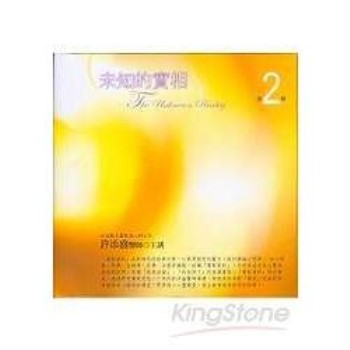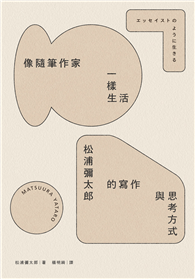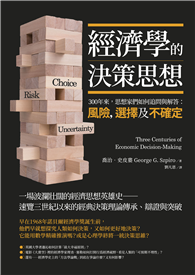| FindBook |
有 1 項符合
AUDIO BANDWIDTH EXTENSION的圖書 |
 |
AUDIO BANDWIDTH EXTENSION 作者:LARSEN 出版社:JOHN WILEY & SONS,LTD 出版日期:2004-01-01 |
| 圖書館借閱 |
| 國家圖書館 | 全國圖書書目資訊網 | 國立公共資訊圖書館 | 電子書服務平台 | MetaCat 跨館整合查詢 |
| 臺北市立圖書館 | 新北市立圖書館 | 基隆市公共圖書館 | 桃園市立圖書館 | 新竹縣公共圖書館 |
| 苗栗縣立圖書館 | 臺中市立圖書館 | 彰化縣公共圖書館 | 南投縣文化局 | 雲林縣公共圖書館 |
| 嘉義縣圖書館 | 臺南市立圖書館 | 高雄市立圖書館 | 屏東縣公共圖書館 | 宜蘭縣公共圖書館 |
| 花蓮縣文化局 | 臺東縣文化處 |
|
|
- 圖書簡介
Bandwidth extension (BWE) refers to various methods that increase either the perceived or real frequency spectrum (bandwidth) of audio signals. Such frequency extension is desirable if at some point the frequency content of the audio signal has been reduced, as can happen for example during recording, transmission or reproduction.
This volume, significant in dealing exclusively with BWE, discusses applications to music and speech and places particular emphasis on signal processing techniques.
Presents an all-encompassing approach to BWE by covering theory, applications and algorithms
Reviews important concepts in psychoacoustics, signal processing and loudspeaker theory
Develops the theory and implementation of BWE applied to low-frequency sound reproduction, perceptually coded audio, speech and noise abatement
Includes a BWE patent overview
Audio Bandwidth Extension pulls together recent developments in to a single volume and presents a coherent framework to the reader. Such an approach will have instant appeal to engineers, specialists, researchers and postgraduate students in the fields of audio, signal processing and speech. - 名人/編輯推薦
"Readers active in this or related fields will find the work of significant value as a reference…also highly suitable for students who are beginning research in these areas." (Journal of the Audio Engineering Society, September 2005)
"…full of information on bandwidth extension for audio signals that is difficult to find in other sources; it is recommended to anyone involved in audio or digital audio design." (Computing Reviews.com, May 12, 2005) - 目次
Preface.
I Introduction.
I.1 Bandwidth Defined.
I.2 Historic Overview.
I.2.1 Electroacoustic Transducers.
I.2.2 Sound Quality.
I.3 Bandwidth Extension Framework.
I.3.1 Introduction.
I.3.2 The Framework.
1 From Physics to Psychophysics.
1.1 Signal Theory.
1.1.1 Linear and Non-linear Systems.
1.1.2 Continuous-time LTI (LTC) Systems.
1.1.3 Discrete-time LTI (LTD) Systems.
1.1.4 Other Properties of LTI Systems.
1.1.5 Digital Filters.
1.2 Statistics of Audio Signals.
1.2.1 Speech.
1.2.2 Music.
1.3 Loudspeakers.
1.3.1 Introduction to Acoustics.
1.3.2 Loudspeakers.
1.3.3 Bessel and Struve Functions.
1.4 Auditory Perception.
1.4.1 Physical Characteristics of the Peripheral Hearing System.
1.4.2 Non-linearity of the Basilar Membrane Response.
1.4.3 Frequency Selectivity and Auditory Filters.
1.4.4 Loudness and Masking.
1.4.5 Pitch.
1.4.6 Timbre.
1.4.7 Auditory Scene Analysis.
1.4.8 Perceptual Modelling – Auditory Image Model.
2 Psychoacoustic Bandwidth Extension for Low Frequencies.
2.1 Introduction.
2.2 Psychoacoustic Effects for Low-frequency Enhancement of Small Loudspeaker Reproduction.
2.2.1 Pitch (Harmonic Structure).
2.2.2 Timbre (Spectral Envelope).
2.2.3 Loudness (Amplitude) and Tone Duration.
2.3 Low-Frequency Psychoacoustic Bandwidth Extension Algorithms.
2.3.1 Overview.
2.3.2 Non-Linear Device.
2.3.3 Filtering.
2.3.4 Gain of Harmonics Signal.
2.4 Low-Frequency Psychoacoustic Bandwidth Extension with Frequency Tracking.
2.4.1 Non-Linear Device.
2.4.2 Frequency Tracking.
2.5 Subjective Performance of Low-Frequency Psychoacoustic Bandwidth Extension Algorithms.
2.5.1 ‘Virtual Bass’.
2.5.2 ‘Ultra Bass’.
2.6 Spectral Characteristics of Non-Linear Devices.
2.6.1 Output Spectrum of a Rectifier.
2.6.2 Output Spectrum of Integrator.
2.6.3 Output Spectra in Discrete Time.
2.6.4 Output Spectrum of Clipper.
3 Low-frequency Physical Bandwidth Extension.
3.1 Introduction.
3.2 Perceptual Considerations.
3.2.1 Pitch (Spectral Fine Structure).
3.2.2 Timbre (Spectral Envelope).
3.2.3 Loudness (Amplitude).
3.3 Low-frequency Physical Bandwidth Extension Algorithms.
3.3.1 Systems with Low-frequency Extension.
3.3.2 Non-linear Device.
3.3.3 Filtering.
3.3.4 Gain of Harmonics Signal.
3.4 Low-frequency Physical Bandwidth Extension Combined with Low-frequency Psychoacoustic Bandwidth Extension.
4 Special Loudspeaker Drivers for Low-frequency Bandwidth Extension.
4.1 The Force Factor.
4.2 High Force Factor Drivers.
4.3 Low Force Factor Drivers.
4.3.1 Optimal Force Factor.
4.4 Transient Response.
4.4.1 Gated Sinusoid Response.
4.4.2 Impulse Response.
4.5 Details of Lumped-element Parameters and Efficiency.
4.6 Discussion.
5 High-frequency Bandwidth Extension for Audio.
5.1 Introduction.
5.2 The Limits of Deconvolution.
5.3 Perceptual Considerations.
5.3.1 Pitch (Harmonic Structure).
5.3.2 Timbre (Spectral Envelope).
5.3.3 Loudness (Amplitude).
5.3.4 Effects of Hearing Loss.
5.3.5 Conclusions.
5.4 High-frequency Bandwidth Extension for Audio.
5.4.1 Non-linear Device.
5.4.2 Filtering.
5.4.3 Gain of Harmonics Signal.
5.5 Spectral Band Replication (SBR).
5.6 High-frequency Bandwidth Extension by Instantaneous Compression.
5.6.1 Introduction and Algorithm.
5.6.2 Analysis of Harmonics Generation.
5.6.3 Implementation.
5.6.4 Examples.
5.6.5 Approximation of the Function tanh(Z).
6 Bandwidth Extension for Speech.
6.1 Applications.
6.2 From a Speech Production Model to the Bandwidth Extension Algorithm.
6.2.1 Model of the Process of Speech Production.
6.2.2 Bandwidth Extension Algorithm.
6.2.3 Alternative Structures.
6.3 Extension of the Excitation Signal.
6.3.1 Explicit Signal Generation.
6.3.2 Non-linear Processing.
6.3.3 Modulation in the Time Domain.
6.3.4 Pitch Scaling.
6.3.5 Discussion.
6.4 Estimation of the Wideband Spectral Envelope.
6.4.1 Representations of the Estimated Spectral Envelope.
6.4.2 Instrumental Performance Measure.
6.4.3 Theoretical Performance Bound.
6.5 Feature Selection.
6.5.1 Mutual Information.
6.5.2 Separability.
6.5.3 Linear Discriminant Analysis.
6.5.4 Primary Features.
6.5.5 Evaluation.
6.6 Codebook Mapping.
6.6.1 Vector Quantization and Training of the Primary Codebook.
6.6.2 Training of the Shadow Codebook.
6.7 Linear Mapping.
6.7.1 Training Procedure.
6.7.2 Piecewise-linear Mapping.
6.8 Gaussian Mixture Model.
6.8.1 Minimum Mean Square Error Estimation.
6.8.2 Training by the Expectation-maximization Algorithm.
6.9 Hidden Markov Model.
6.9.1 Statistical Model of the Markov States.
6.9.2 Estimation Rules.
6.10 Discussion.
7 Noise Abatement.
7.1 A Special Kind of Noise Reduction.
7.2 The Noise Pollution Problem – Case Study.
7.3 The Application Low-frequency Psychoacoustic Bandwidth Extension to Noise Pollution.
8 Bandwidth Extension Patent Overview.
Appendix A Multidimensional Scaling.
A.1 Introduction.
A.2 Scaling.
A.3 Example.
A.4 Procedure.
A.5 Precautions Concerning the Solution.
A.6 Significance of Stress.
A.7 Univariate Scaling.
References.
Index.
|











